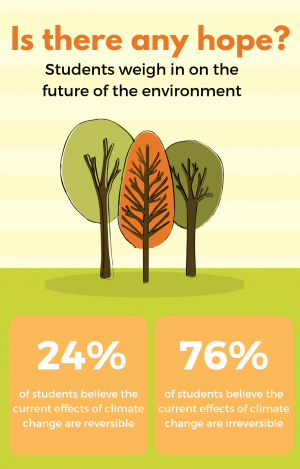California wildfires impacted by global warming
Photo by former Chantilly student Harini Vorungati.
On August 19, wildfires expanded over the streets of Sacramento, California and transformed the sky into a red-orange color.
October 27, 2020
Twenty-six deaths. 6,223 buildings destroyed. Over 23,000 people evacuated.
Wildfires are especially intense from September to November; however, they’re becoming increasingly dangerous. There have already been 44,714 wildfires so far this year in the United States, which is 3,311 more than last year according to Insurance Information Institute. The Bobcat fire, El Dorado fire and many more wildfires have been rampaging throughout the entire west coast.
“To me, the biggest concern about the fires in California, as well as climate change in general, is the disastrous effects they will have on humanity,” former CHS student and co-director of Virginia Youth Climate Cooperative’s Science Research Team, Lalitha Aiyar said. “Just a week or so ago, the sky in Virginia Beach where I live contained smoke from the wildfires.”
According to AP News, the increase in U.S. wildfires is linked to global warming because of the increased amount of carbon dioxide and nitrous oxide being released into the atmosphere, consequentially worsening California’s air quality.
“I’m quite afraid of the conditions California is going through right now,” former CHS student Harini Vorungati said. “I live near Sacramento, and although there were no fires nearby, there were many in the bay area and Vacaville. The smoke from those areas made our air quality so horrible that we weren’t allowed to step outside for three weeks.”
The National Interagency Fire Center (NIFC) has reported that around 7.01 million acres have been burned by wildfires globally this year, surpassing the 10-year average by around one million acres. For California specifically, it passed the record for the worst year in history for the amount of damaged land from the wildfires
“On the one hand, containment levels appear to have vastly improved but on the other hand, California’s fire season has not yet peaked,” Aiyar said. “I think California’s future really depends on how the rest of the season plays out. If the current fires are contained and put out soon and the rest of the season is mild, I think things will ultimately turn out relatively okay.”
As wildfires keep brewing, around 11,500 firefighters in California have been working on the frontline trying to contain the fires. Yet, citizens globally still believe there should be more actions taken to prevent these long-lasting wildfires from permanently impactafing the state’s land health.
“By taking action to reduce emissions and combat climate change in the present, we can potentially mitigate later wildfires, which will almost certainly worsen without human action,” Aiyar said. “We have to pressure our governments and elect climate-smart officials at the local, state and national levels to take meaningful actions on these issues. As individuals, we can do our part by behaving responsibly when in these flammable forests.”






